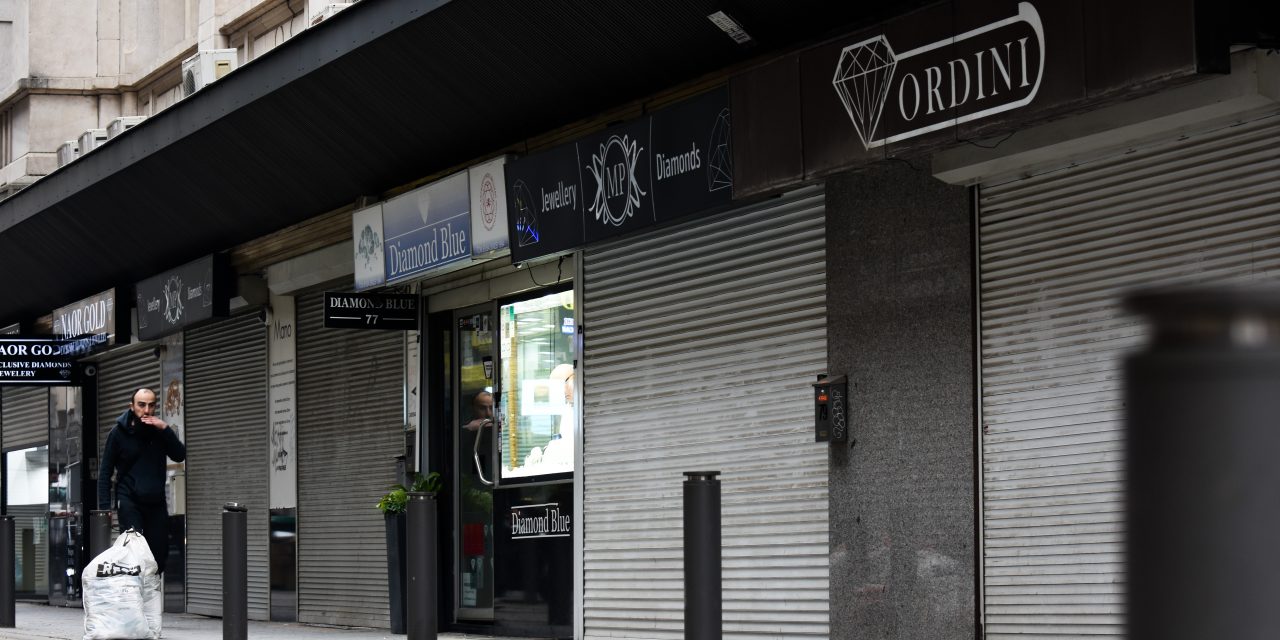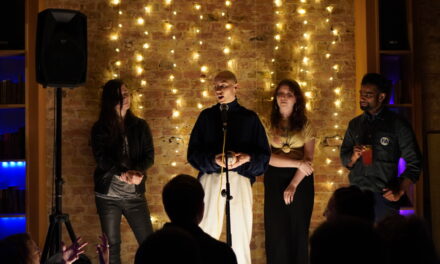Even today, the diamond industry is developing and expanding with growing demand in emerging markets.
The industry changes all the time and adapts to new periods, such as the development of technology. Diamond districts have a long history as professionals in the industry, but will it be able to keep its relevant place in the future when online sales grow in popularity?
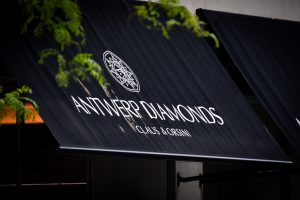
Around the 16th century, Antwerp was Europe’s richest city and one of the wealthiest and most influential cities in the world.
There are a dozen diamond districts in the world and the largest of them is located in Antwerp. About 84% of the world’s rough diamonds still pass through the district, making it the capital district in the world with a turnover of 54 billion dollars. The diamond district, also known as the Antwerp World Diamond Centre has been a major hub for diamond trading since the 15th century.
It gained international recognition as a leading diamond centre due to its diamond cutting, polishing, and trading activities. Through generations of skilled artisans and a thriving ecosystem of diamond-related businesses, Antwerp developed a reputation for exceptional craftsmanship, industry knowledge, and a robust network that attracted traders and buyers from around the world. The district has played a vital role in establishing Antwerp as a global diamond capital and has been instrumental in shaping the city’s identity by serving as a prominent centre for diamond cutting, trading, and expertise for centuries.
In addition to the port and chocolate, the city of Antwerp is known as the hub of the world’s diamond trade
Multicultural Antwerp is a modern and lively city of half a million inhabitants. A large part of the centre is closed to cars, which makes the city like one big living room.
The old Jewish quarter of Antwerp, located west of the station, is the centre of the international diamond trade, and the area is known as Diamant. It consists of several square blocks covering an area of about one square mile.
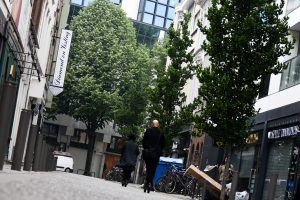 The neighbourhood is dominated by Jewish, Jain Indians, Maronites Christian Lebanese and Armenian dealers and more than 80% of Antwerp’s Jewish population works in the diamond trade.
|
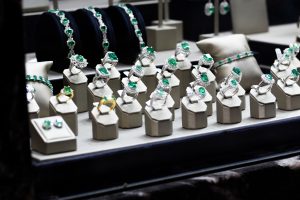 Diamonds have fascinated people for centuries and are considered a symbol of wealth, love and eternal beauty.
|
Walking down the Hoveniersstraat which is one of the main streets in the diamond district, you can notice that the trade is mostly conducted behind closed doors but you can admire some precious stones from the display windows.
Many of these diamond boutiques have closed their doors for good and business spaces are for sale in a few different locations around the district.
The construction site covers some of the main streets of the district. And also due to previous thefts in the area, security cameras have been invested in and police cars can be seen in the street view.
The area is calm and somewhat silent. It is hard to imagine that the place contains such a big business that includes such a large amounts of money.
 Several police officers can be seen in the area for security reasons.
|
 The main streets are under reconstruction.
|
What role does online sales play in the diamond industry?
The diamond market is expected to continue growing in the coming years, driven by rising demand for diamond jewellery and increasing popularity of lab-grown diamonds as an ethical and sustainable alternative to natural diamonds.
CEO of Tillander and a jewellery designer Tina Tillander thinks that there will always be as many diamonds in the world as there is demand, at least if we are talking about round, white, normal diamonds.
“In the last ten years one big change in the industry has been the sale of these synthetic diamonds which have strongly entered the market. They are so-called lab grown diamonds”, Tillander says.

A picture of the window of a diamond shop in Antwerp.
At the same time online sales have become more common and in the diamond industry there are many more different options for buying jewellery than before. Because setting up an online store is much easier than a physical diamond store, a lot of innovative companies appear on the market. According to Statista online jewellery sales worldwide amounted to approximately 11.5 billion U.S. dollars in 2019 and were projected to reach around 19 billion U.S. dollars by 2023.

Online jewelery sales have grown every year.
The question is, how are the diamond centres? Will online sales take all the customers or will the demand for districts remain in the future? Have people’s shopping habits been shaped by diamond stores as well?
It is true that the diamond market has seen changes due to online platforms. The internet has facilitated diamond sales making it easier for consumers to access a wide range of options from various sellers worldwide. Online platforms provide detailed product information, certificates, and sometimes even virtual inspections, enhancing transparency and convenience for buyers.
“We have customers who buy diamonds online and from my experience young people do it more. I still feel that this is a field that also needs professional expertise and a concrete person to tell them about these options face-to-face”, Tillander emphasises.
Tillander reminds that laymen do not have the same knowledge as diamond experts. If the customer wants a diamond cut, polished and shaped in a certain way it would be good to go through the shops thoroughly.

Online sales offers various diamond services. Picture from the James Allen`s website.
Blue Nile and James Allen are one of the largest online diamond retailers. Their website presents what kind of opportunities they offer to consumers, among other things in matters related to guidance and doing business on the Internet.
For example James Allen has G.I.A graduate gemologists on staff. These gemologists are an integral part of their customer service team. If a client has any further questions, they can speak with a graduate gemologist at any time. Blue Nile also allows you to book an interactive appointment with an expert to get up-close views of diamonds.
Unlike traditional jewellers, these diamond retailers are usually available 24 hours a day, seven days a week. They offer different kind of support with diamond and jewellery experts at any time which is a real advantage when compared to a normal physical store.
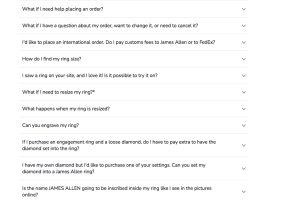
Online shopping in the diamond market raises various questions.
District continues to be a prominent destination for diamond trading
Some customers still prefer the traditional experience of physically examining diamonds before making a purchase, especially for high-value or custom pieces. For example Antwerp’s diamond district continues to cater to these needs, offering a unique hands-on experience and a chance to witness the craftsmanship firsthand.
Have to remember that the diamond industry still thrives on personal relationships, trust, and expertise. Many buyers and sellers prefer face-to-face interactions, especially when dealing with high-value gemstones like diamonds. The district offers a concentrated network of diamond dealers, cutters, polishers, and experts, making it convenient for industry professionals and enthusiasts to conduct business.
“Of course you can buy it online and you can have diamonds with certificates. They are certainly true. But we have to remember that people don’t usually know anything about gemstones, the knowledge is very limited so the trust throughout the process is really important”, Tillander reminds.
“If you buy a relatively inexpensive stone. Let’s say you want a 10-ton stone, a 5-ton or two-ton stone you can buy it online, but if you want something a little more special, people don’t buy those online. They are obtained through a different method than through the Internet” Tillander adds.
Although we consider online sales, the Antwerp diamond district retains its significance as a centre of diamond trading and expertise. Its long-established reputation, specialised knowledge, and personal interactions make it an important cultural and economic asset for the city.
“I had always thought that any business which requires professionalism also requires that trust towards the customer”, Tillander says.
Tillander cannot overemphasise how important trust is between the customer and the trader. She also thinks it is most easily created in presence.
“We have to know that what we have bought is what we have paid for.”
The diamond centre of the world is a title the city wants to hold on to
Diamond districts often have a rich historical heritage that is part of the city’s cultural identity. In this case, the diamond district represents a continuum and a tradition that passes from one generation to another over the years. The preservation of such areas is important, as it helps to connect and maintain the connection with the past and through this also tells about the historical importance of the city, so even if the majority of diamond purchases move online, the preservation of well-known diamond areas would still be culturally important. They serve as reminders of the city and its inhabitants.

Office room sale in the district.
Antwerp’s diamond district also makes the city unique. As long as the district is in operation, the city will maintain its unique character and aesthetics. When you google things to do or see in Antwerp, the search offers a lot related to diamonds. After all, these areas and places are well-known landmarks and in a certain way also a source of pride for locals and tourists. The diamond centre of the world is also a title that the city definitely wants to hold on to.
If you think about it from the point of view of people working in the diamond industry, it would be a shame if such a diamond district never existed again. The diamond circles themselves often promote a sense of community among different professionals. Through regions, it is easier to maintain the social structure of the industry and networking opportunities.
Economically, the diamond district has been a big factor in the city. Antwerp was one of the richest cities in the 2010s, thanks in part to the diamond industry and sales.
Well-known diamond areas attract tourists, if not to buy diamonds, at least to visit the area. Guided tours of the area, exhibitions and diamond museums are also in great demand. Preserving these areas supports cultural tourism, which can bring economic benefits to the city and support local businesses.
|
|
|
What does an Antwerp resident think of the area and its importance?
Bart Van Nuffelen, who is from Antwerp, made a popular podcast series about a few special events that happened in the area.
Van Nuffelen is a theatre director and author who became interested in writing about the subject for many reasons. One of the main things was the interestingness of the area, its theatrical culture and neighbourhood.
“Jewish culture is such a world of its own in that place. I knew as a storyteller that it’s very specific. When you’re on these streets, you see these people and I’m very often there. It contains a kind of secrecy and mystique”, Van Nuffelen says.
After 1945, Antwerp’s Jewish community dominated industry, enabling the port city to grow into a leading diamond centre. Up to 25,000 Jews used to work in the diamond workshops. Their numbers have shrunk considerably, because the Indians have been on the rise since the 1960s. Today about 20,000 Jews live in the district.
Van Nuffelen believes that the area is still important for the city, especially from an economic point of view.
“I also believe that it is an important part of our city when I see how the city markets itself and the region to visitors, both national and international. I also think a lot of people are a little bit proud that we have this possibility over here and that it’s important”, Van Nuffelen adds.
The developing world around forces us to change but not to disappear
In the end, the choice between buying diamonds online or in traditional districts depends on individual preferences, trust factors and the significance placed on physical examination and personal interactions.
There will certainly be demand for both in the future. Online shopping as well as buying diamonds on the spot in the district. However, it is clear that changes are coming. Diamond district must keep up with the world’s changes and possibly invent new and modern ways to offer its customers diamond sales according to the traditional formula, as well as something new and something that is not possible via the internet. The competition will be tough and both sides have their strengths and also weaknesses.
As technology develops at a rapid pace, it is impossible to say what the future will bring but taking into account all important points and facts that these kinds of places include, the future of the district or its importance is not disappearing.
|
|
|
